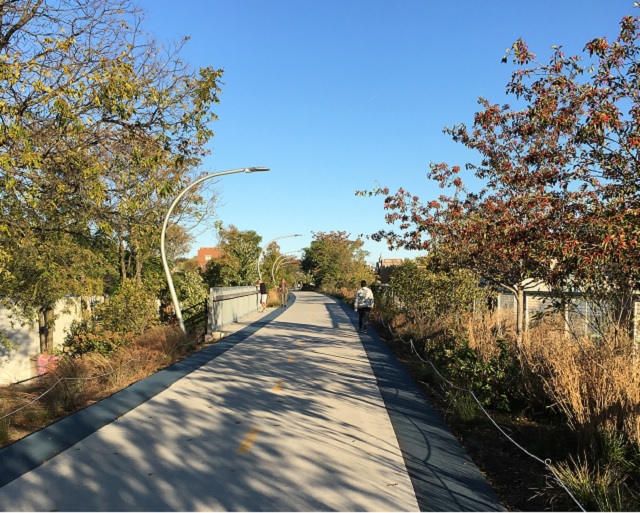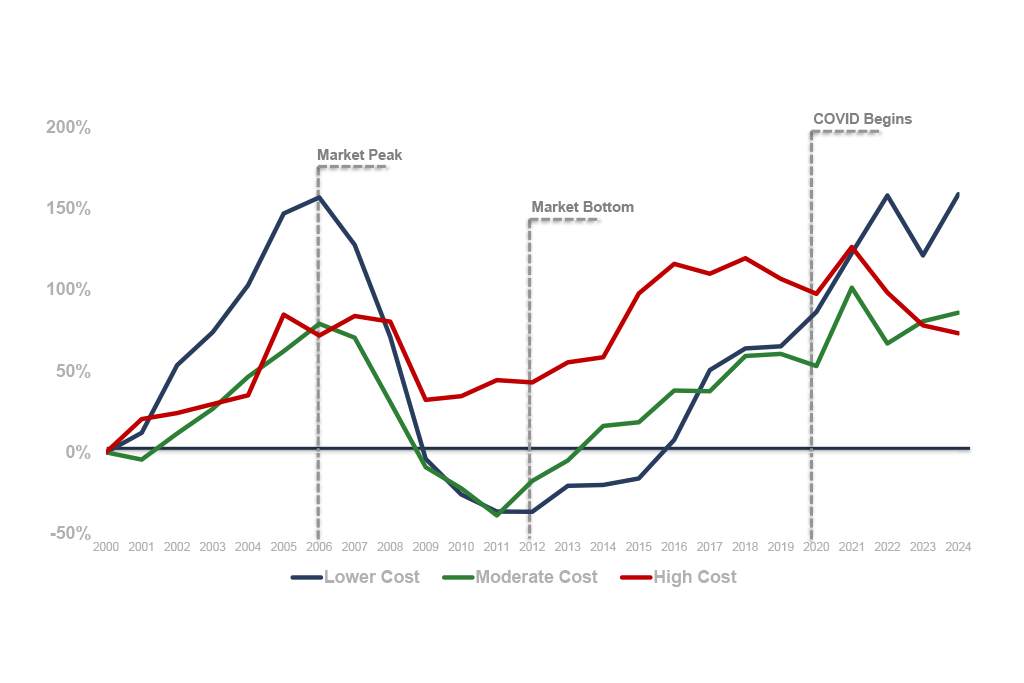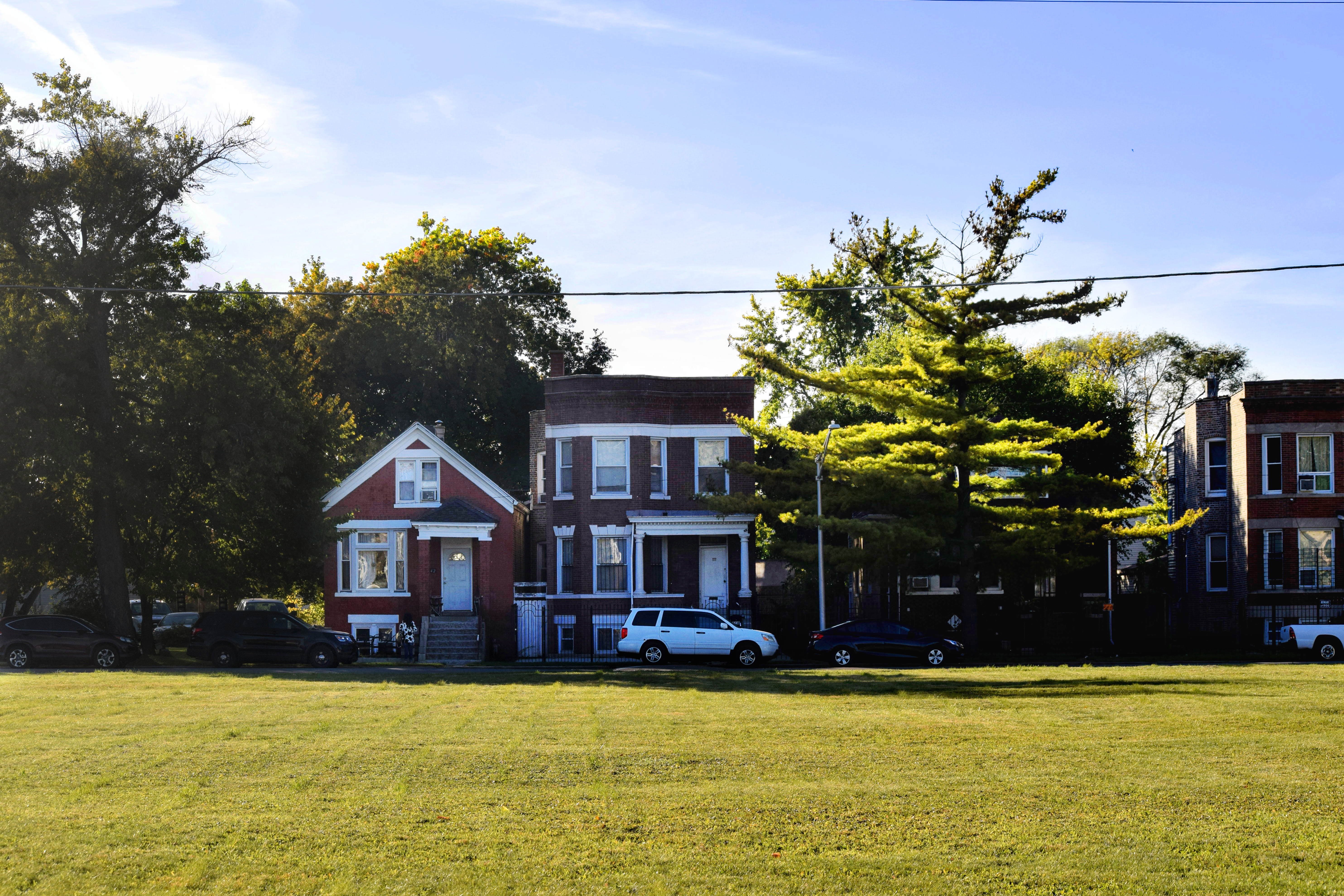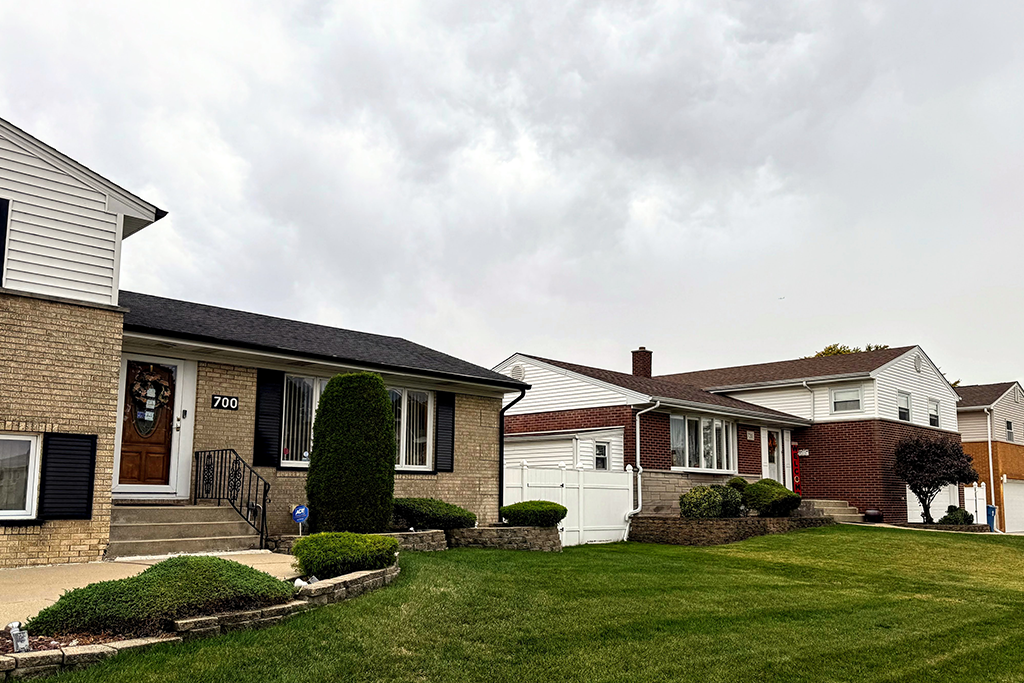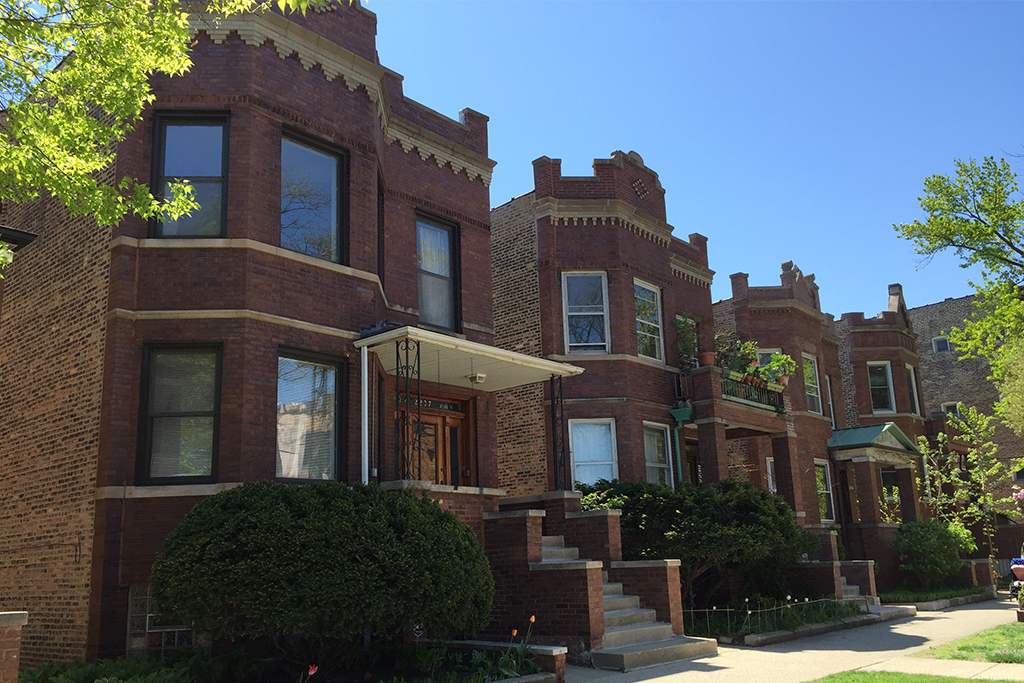More than a year after the Bloomingdale Trail, also known as The 606, opened on the northwest side of Chicago, its impact on the surrounding communities is becoming apparent. Our new report analyzes how house prices in the areas adjacent to the 2.7-mile trail have changed. We find that in the already strong and stable eastern half of the trail, The 606 had a very limited effect on house prices because demand for housing and prices were already very high. In the west, however, the trail attracted new demand from buyers willing to pay a substantial 22 percent premium to live near the trail.
The introduction of a new amenity like The 606 combined with a perfect storm of housing and demographic conditions both raises concerns about future affordability for lower-income residents and point to policy approaches that cities can take as they seek to introduce new amenities.
These insights for policy development around future projects similar to The 606 include:
Neighborhood characteristics matter. Key indicators, including a neighborhood’s location, housing market characteristics, and demographic mix, matter in how a housing market responds to an investment like The 606. City planners and grassroots organizations can use these factors to assess the risk to housing affordability and of potential displacement in advance of any major public investment project.
As others have done in San Francisco, Los Angeles, and Portland, mapping out different neighborhood types and their associated risks may help experts target and prioritize appropriate strategies. In communities with characteristics similar to the western half of The 606 (such as a proximity to strong and stable housing markets, relatively low housing costs, high levels of renters, and relatively lower-income households) certain types of investments may lead to greater short-term risk of lost affordability and more aggressive policies may be required to preserve it. However, in other neighborhoods that have a higher level of housing distress or are more isolated from stronger real estate markets, similar investments may not present the same risk. For these areas, a different set of policy tools are likely more appropriate.
The timing of interventions are important to their success. For neighborhoods on the western half of the trail, prices for single-family homes increased dramatically after 2012, and much of this increase can be attributed to the premium buyers were willing to pay to purchase properties near the trail. Increases in property values were so substantial after work on the trail began that many policies tied to maintaining housing affordability likely have become difficult to implement after the fact. With future projects, policymakers may need to focus on implementing policy interventions early in the planning process to be most effective.
For example, land acquisition funds or land trusts can be used as preemptive efforts to acquire properties or land that is likely to become pricier and more difficult to purchase after a project breaks ground. Acquiring these properties gives a city or other stakeholders increased control of land in the target area and provides opportunities to preserve or build affordable housing. In Denver, a group of partners including The Urban Land Conservancy, Enterprise Community Partners, and the City and County of Denver established a fund to support the preservation and development of affordable housing in current or future transit corridors.
Another tool that many cities and local agencies offer are homeownership programs where renters can receive subsidized loans, counseling, or down payment assistance to buy a home. These types of programs can be targeted to local residents in areas where home values are currently low, but are anticipated to increase over time as a result of a large public investment. Such a strategy can increase neighborhood stability and help new, lower-income homeowners take advantage of equity appreciation as an expected benefit of such a project. A homeownership program targeting existing neighborhood residents is being discussed in conjunction with Bridge Park, an urban trail project in Washington, D.C., where the surrounding communities are expecting to see similar pressures to those along The 606.
Certain areas will feel the impact of an investment most acutely. Our analysis identified a clear boundary of influence on house prices. In the western half of the trail, The 606’s impact was most acute within one-fifth of a mile from the trail, declined by roughly 50 percent at a half-mile, and largely disappeared quickly thereafter. This suggests that policy strategies can be utilized to take advantage of expected increases in property values in narrow target areas and that this revenue can be used affordable housing development and other strategies.
Tax Increment Financing (TIF) districts are a popular public financing tool where a portion of tax revenue from rising property values in a defined geographic area go into a fund for local investment projects. Generally, these districts are created for neighborhoods experiencing disinvestment, but the principles of a TIF program have been extended to other areas. For example, along Atlanta’s BeltLine, a Tax Allocation District (TAD), similar to a TIF, was developed to channel higher tax revenue from rising values into a fund for various local initiatives, one of which is preserving affordable housing.
The experience of Altanta BeltLine also presents a cautionary tale on the implementation of some strategies, however. In Atlanta, the formation of the TAD coincided with the recession and a dramatic slowdown in new development in the area. Because of this, only a fraction of the anticipated funds has been raised through this approach, and the affordable housing goals established as part of its initial redevelopment plan have yet to be met. As noted in the BeltLine’s recent Integrated Action Plan, one of the key challenges going forward for meeting affordable housing goals is the lack of available land for development of affordable housing in areas around the park and limited policy tools to incent market-rate developers to include affordable housing in their projects.
The lessons from what happened in the neighborhoods surrounding The 606 can help community members and policymakers identify, prioritize, and target a balanced set of policies that will allow cities and neighborhoods to benefit from the success of public investment projects while also preserving housing affordability and limiting the potential displacement of lower-income residents.
